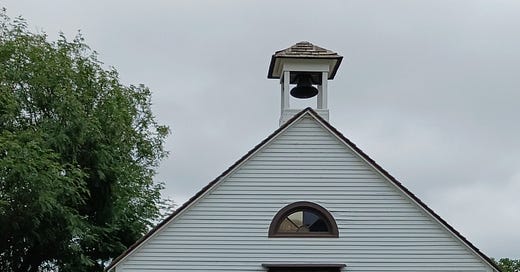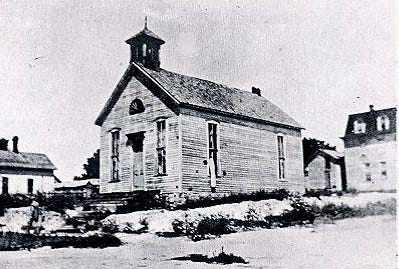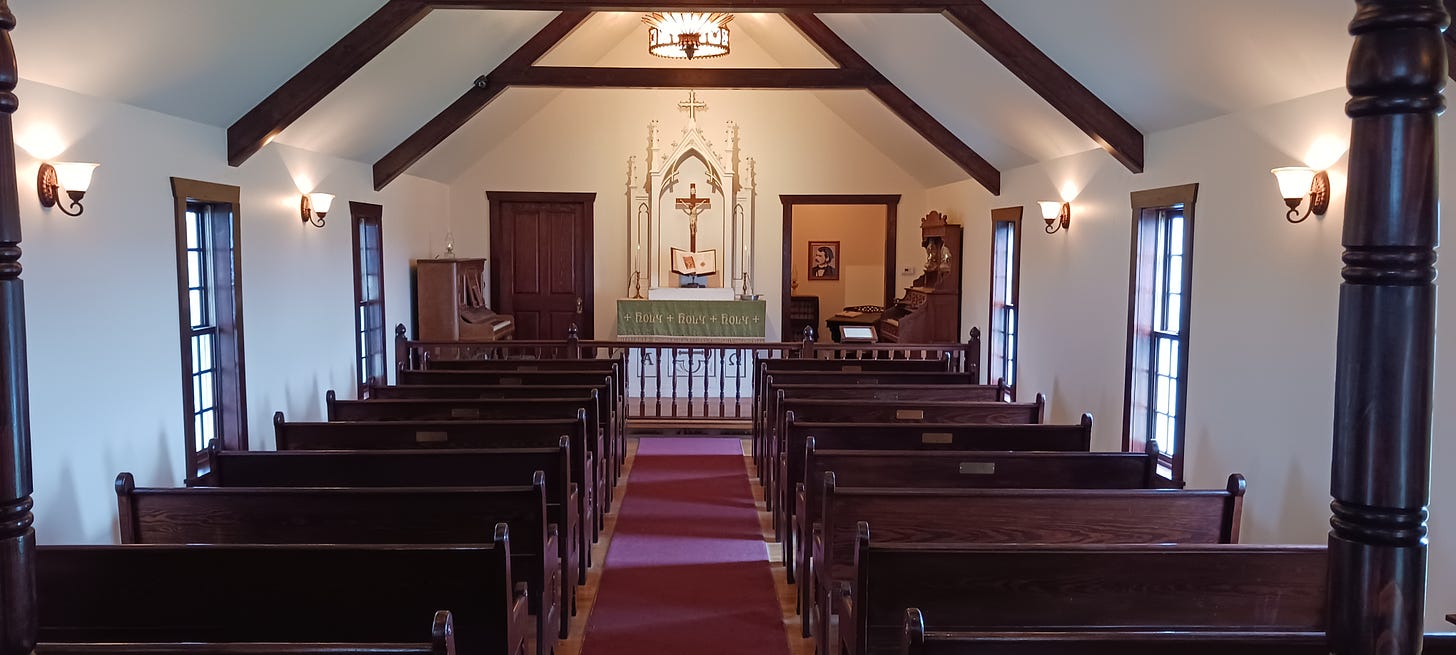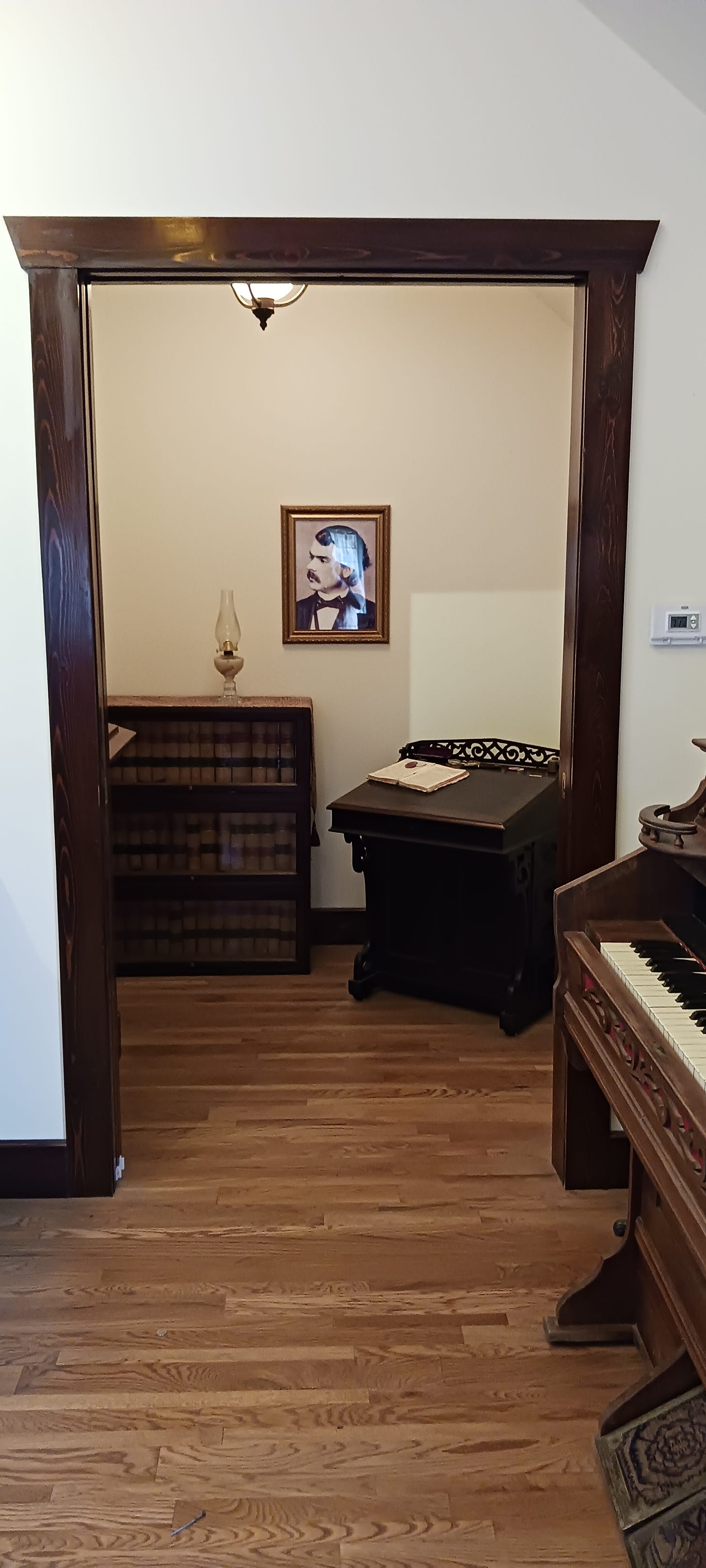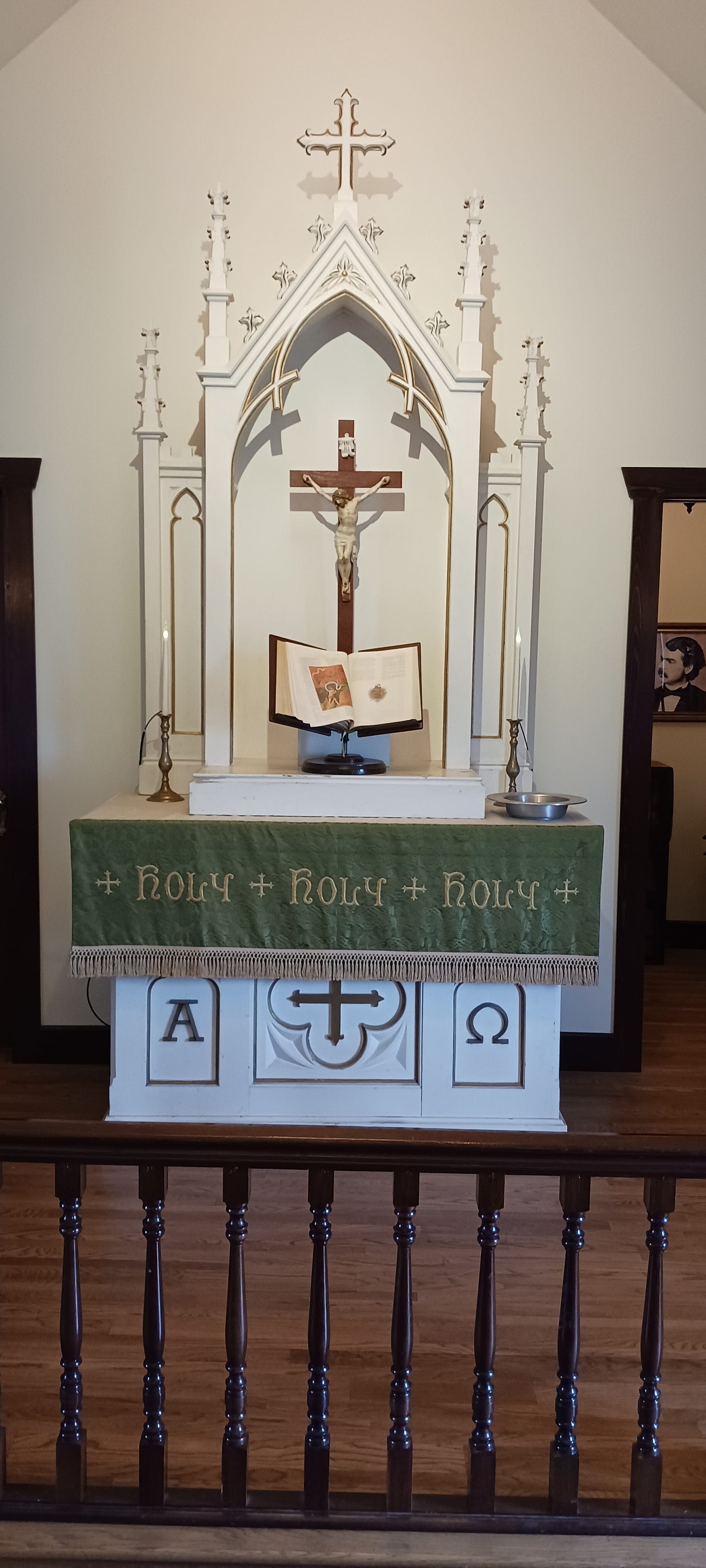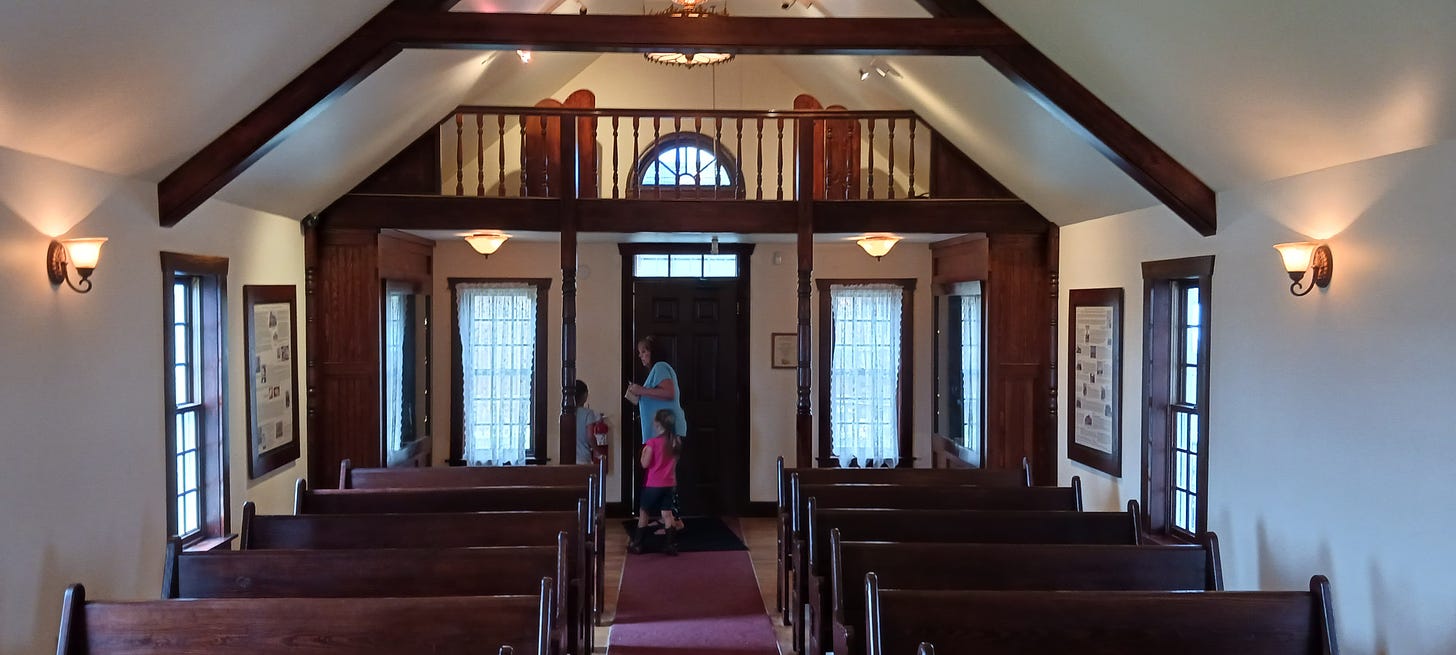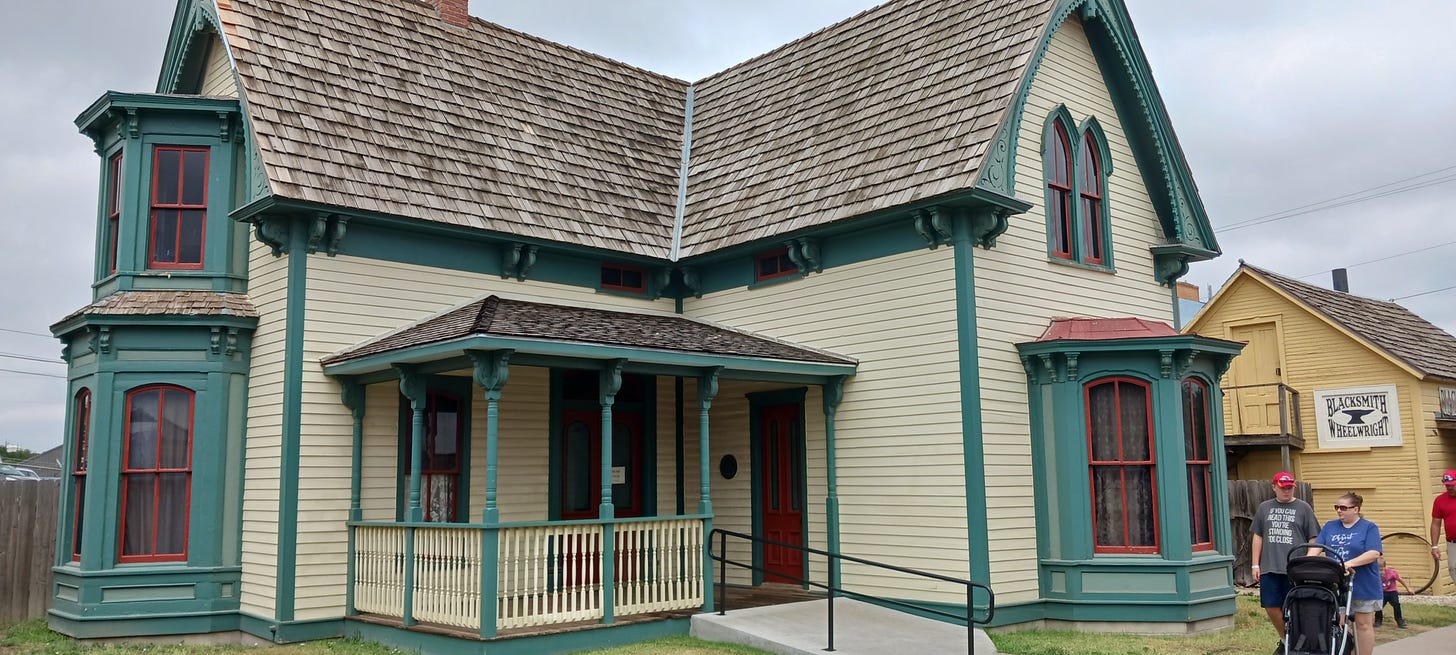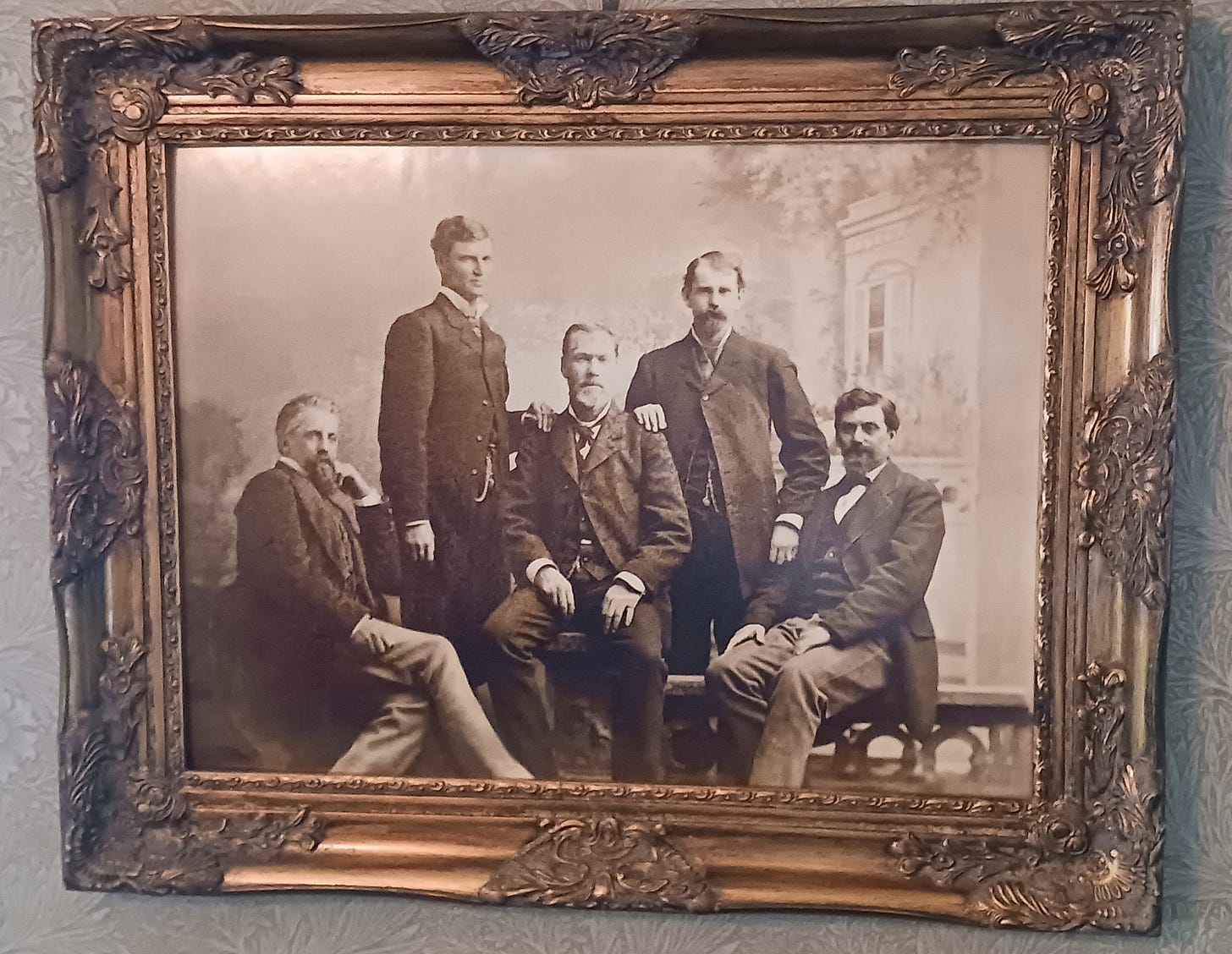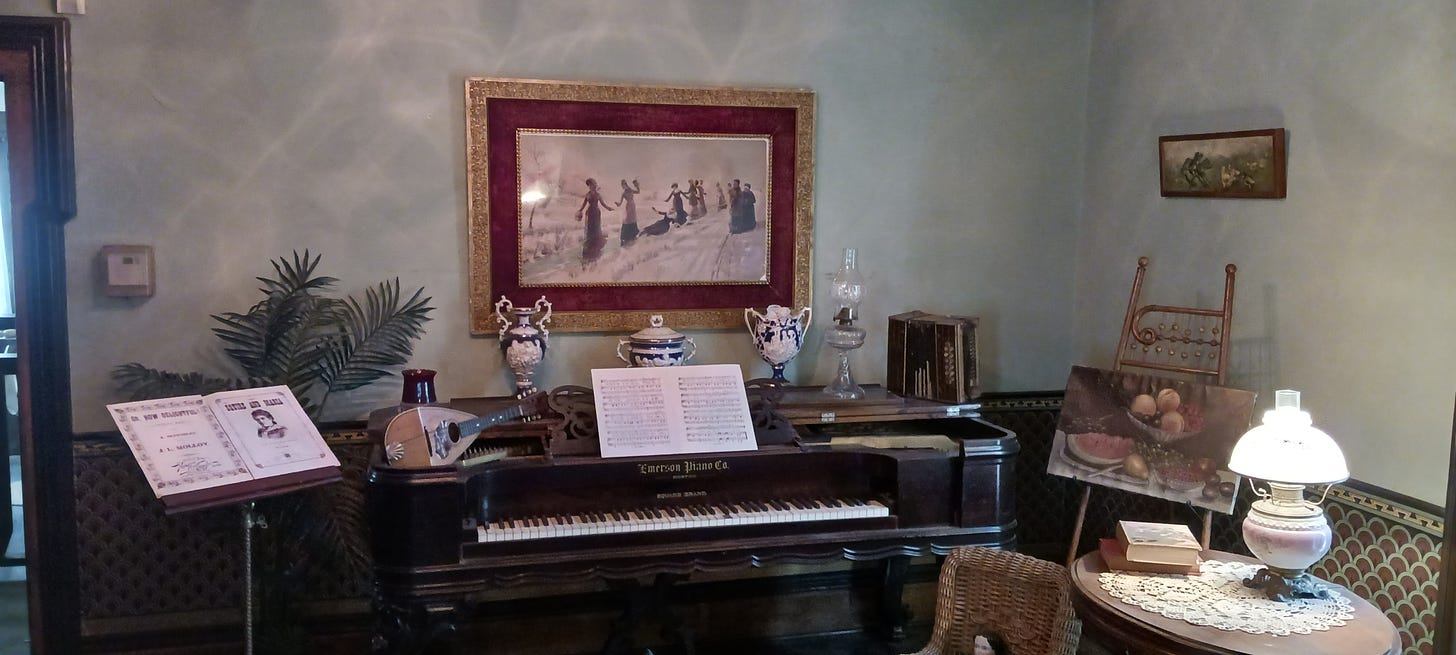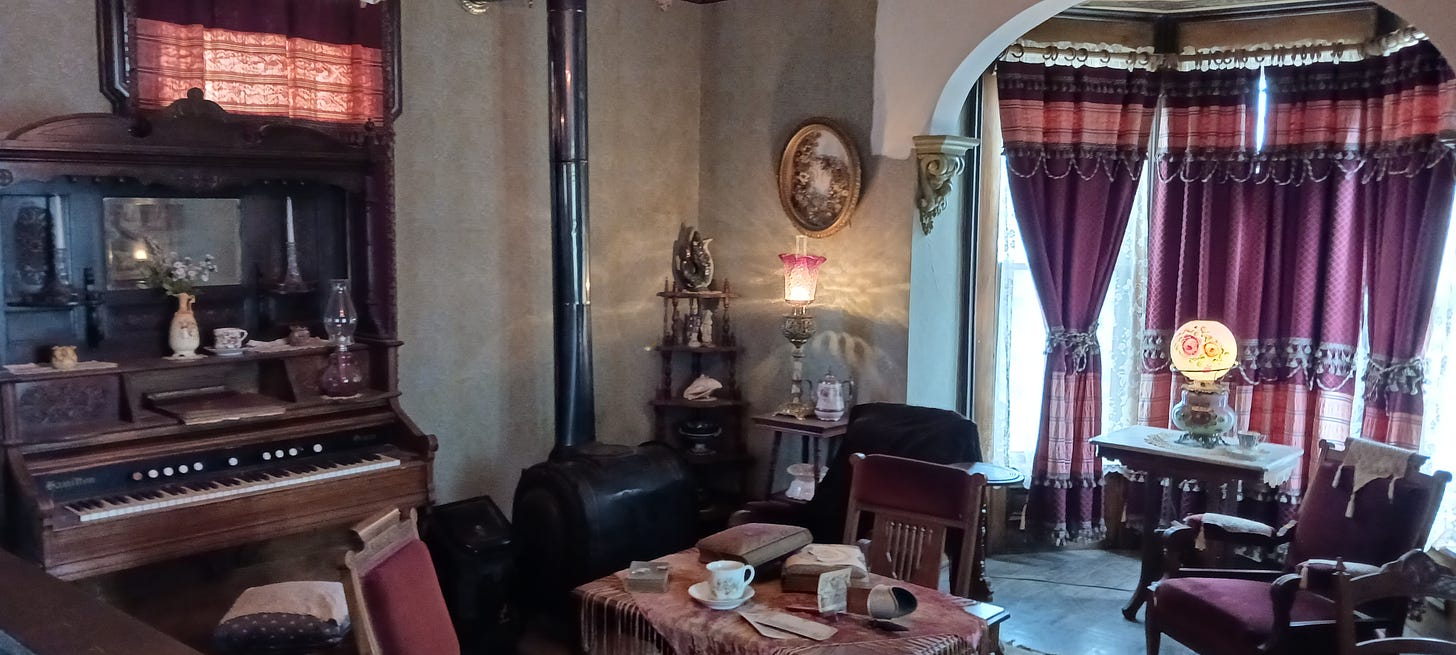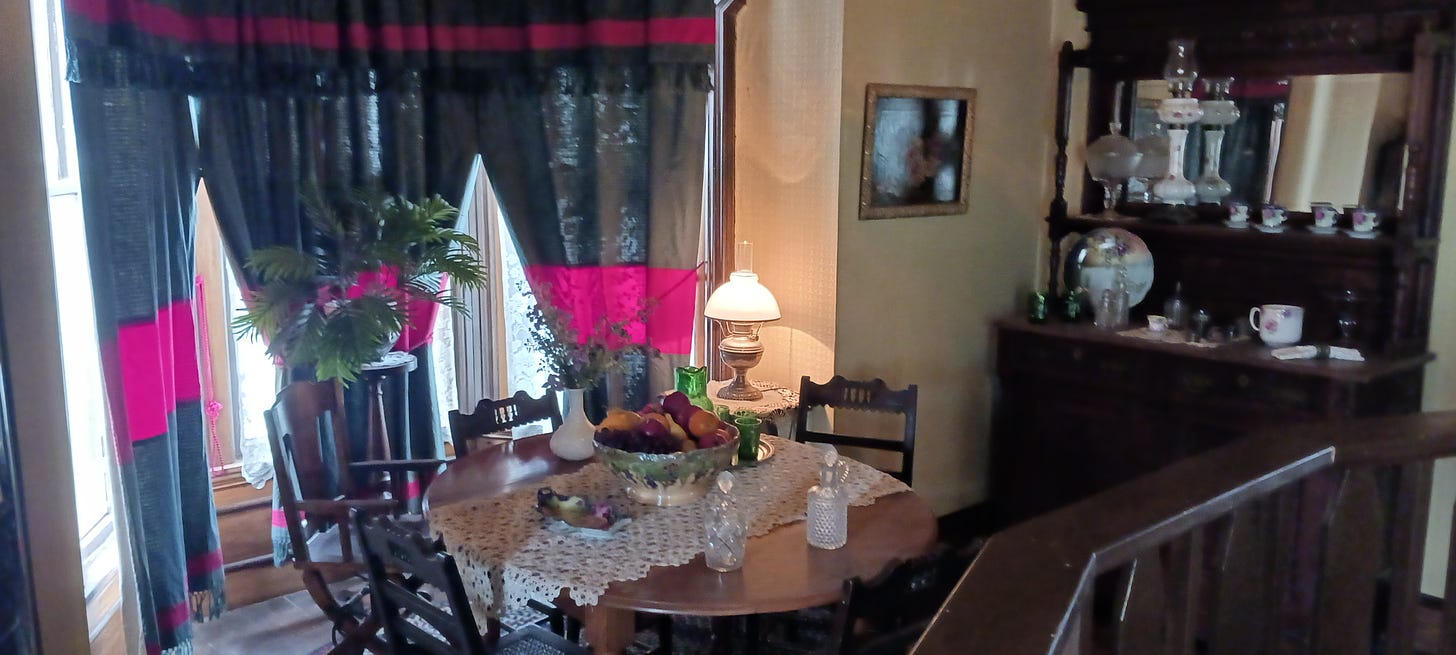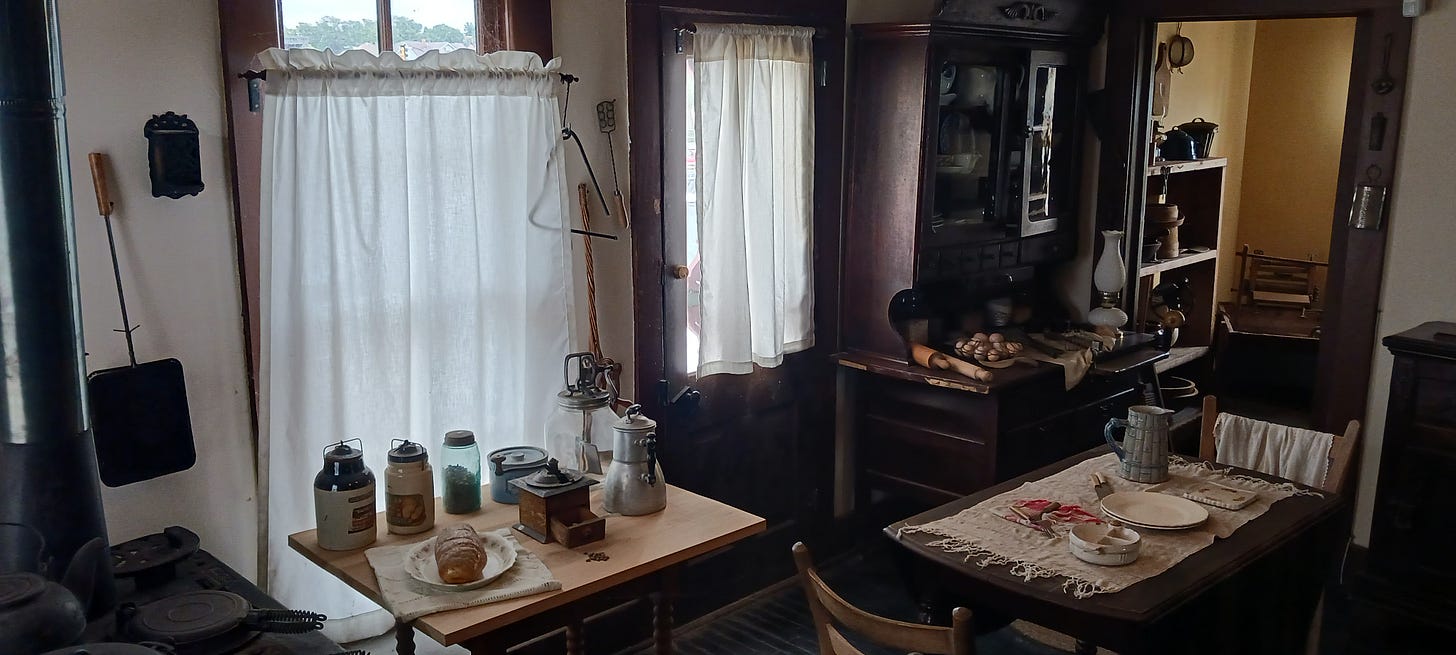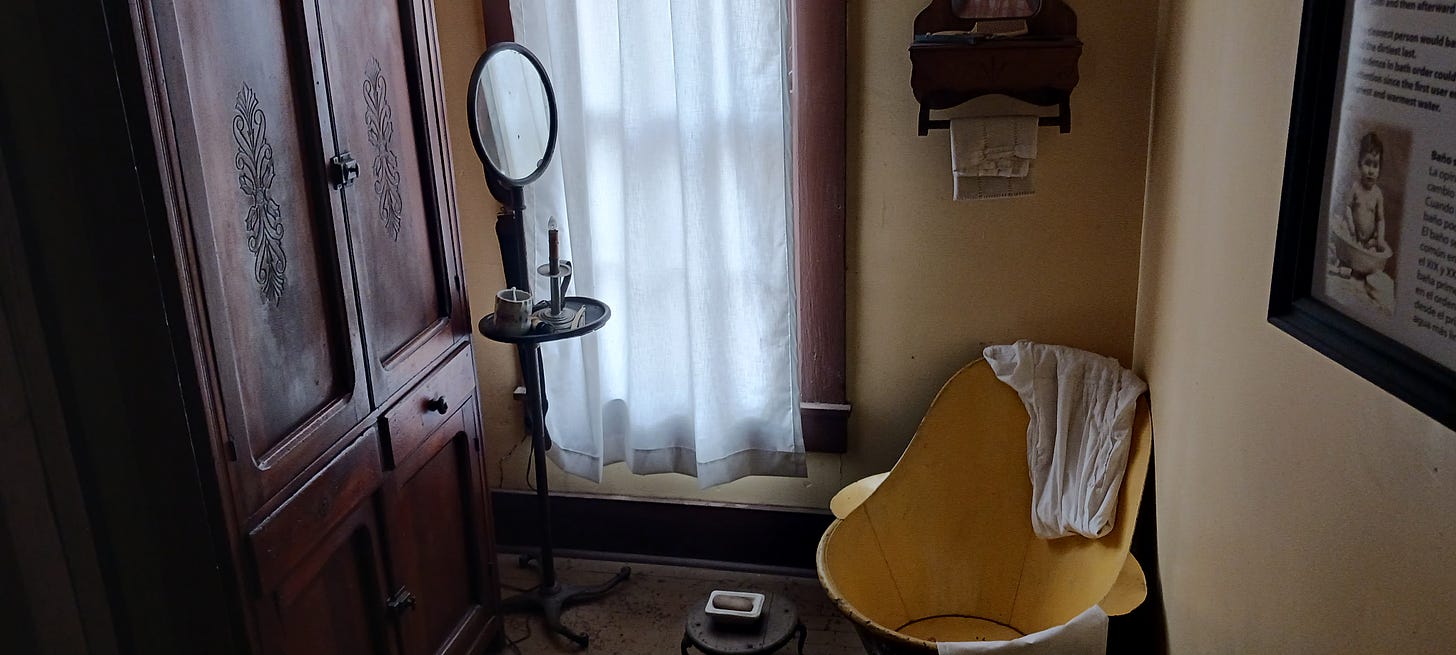You can find the previous installments of our essay here:
Dodge City Days: a Photo Essay
Dodge City Days III: Ft. Dodge and the Coronado Cross
Dodge City Days III: Immaculate Heart of Mary
Dodge City Days III: Boot Hill (I)
What today is called “Gospel Ridge” did not exist in the early days of Dodge City. Between its founding in 1872 and the end of the cattle drives in 1886, the population of Dodge City changed dramatically. Between 1872 and 1886, the number of families, as opposed to single men, grew dramatically. By the early 1880s, there were an equal number of married and single men, caused by a migration from New England and the Middle Atlantic states. This demographic shift, as much as the end of the cattle drives, spelled the end of the Wild West version of Dodge City, the one of myth and legend.
This transition did not come off without a few hitches, as you might imagine. These were the days of Carrie Nation, and the influx of people from the East led to local politics becoming an extension of feuds between members of the Dodge elite who wanted to reform it along Evangelical lines and those who did not. This led to the so-called “Dodge City War” of 1883. It began with an attempt by a Prohibitionist mayor to arrest several women for prostitution, having passed a law targeting that profession, as well as gambling, which led to Wyatt Earp making a brief return to the town, threatening the town council to allow Bat Masterson and another man to return unmolested. The council obliged.
In 1885, an Evangelical revival on Gospel Ridge coincided with temperance activists attempts to shut down saloons. Several saloons as well as houses of prostitutes burned down, likely by temperance advocates. Elsewhere, such temperance fanatics committed worse acts of violence: in Caldwell, a group lynched a bootlegger evading the prohibition law, pinning a note on his body warning others to get out of the business. Acts of violence continued against liquor vendors into the 20th century, including the dynamiting of saloons and drug stores (which were allowed to sell it legally).
In it’s early days, as you might imagine, there was not much of a religious presence in the area. A Catholic mission was set up in Osage county, many miles east of Dodge City, which served the needs of Catholic soldiers, and the first masses were held at Ft. Dodge in 1873, and in Dodge City itself in 1875. Catholics in Dodge City were under the auspices of Immaculate Heart of Mary in Windhorst until Sacred Heart of Jesus Church was completed in 1882, and became a parish in 1885. A new building erected in 1916 served as the Cathedral until a new one was built in 2001 (which we saw in the first installment of this essay).
The earliest Protestant Christians to arrive in Dodge were Methodists, who began meetings the year the town was founded in 1872, but whose church was only built in 1883. They were followed by Baptists (1879) and Lutherans (1883) and many others by the early 20th century. By 1887, there were some half dozen Protestant churches in town, including an African Methodist Episcopal Church, frequented by black citizens.
But the first building for religious purposes was completed in 1876. Union Church was a non-denominational Protestant church, overseen initially by Ormond Wright, a Presbyterian minister from the East who initially preached in saloons and hotels. Built on what would become “Gospel Ridge,” the building cost a thousand dollars to build, and had Bat Masterson and Wyatt Earp as its first deacons.
The building you see above is situated on the museum property, but if the picture of its interior looks more like a Catholic church, then pat yourself on the back. The building is actually that of St. George’s Catholic Church, from Bucklin, Kansas, about thirty miles southwest of Dodge City. This is what the old Union Church looked like in the 19th century, a fairly similar style building:
The pews inside are not original either; they come from Concord Church, in the town of Concord, thirteen miles southwest of Dodge. Only the writing desk, which belonged to Ormond Wright, is from the original building.
Wright convinced Masterson and Earp to become deacons, and also became pastor of the First Presbyterian Church in 1878. He left Dodge in 1882, burnt out from the experience, and went home to New Jersey, where he lived until his death in 1936.
The growth of religion mirrored the growth of the town, which began to attract people more interested in permanent settlement. This can be seen in the growing wealth of the people on the hill, who live above what used to be Front Street. Until the end of the cattle era, this meant the homes of people like Colonel Richard Hardesty, also on the museum property, moved from its original setting on Wyatt Earp Blvd.
Hardesty was a cattle baron of Dodge City, one of its wealthiest citizens. In the picture below, he is seated in the center, beside W.H. Cresweel and Bud Driscoll (to his left), and George E. Hadder and Nick Eaton (to his right). The combined worth of these men was in the millions of dollars, quite a good bit in the 1880s.
Already rich from owning mines in Montana, Hardesty bought the home in 1879 for his wife Margaret. The Hardesty’s sold the house in 1914. In 1969 the later owners died and it came into the possession of the museum in 1970. The house moved twice, once to the museum and then in 2002 to make way for an Applebees restaurant (which plays a part in my journey later on, coincidentally). Most of the items in the house are from the period but not the Hardestys’, except for a clock belonging to their only child, Sallie, in the parlor, as well as an ottoman in the same (though I can’t find it in the photo I took.) Also, one of the paintings in the music room, the small one on the wall to the right, was painted by Sallie Hardesty.
After touring the church and Hardesty House, I was ready to visit the scene of the crime, or many crimes: Boot Hill Cemetery. The next installment will finish up my tour of Boot Hill, taking in the Hollywood version of the town, and describe how the evening ended with your intrepid author imitating the saloon patrons of Dodge’s Wild West days.
